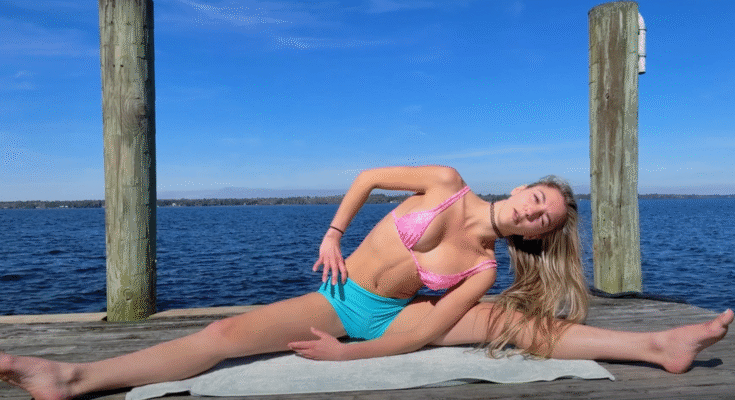In our busy, desk-bound world, the hips tend to carry a lot of tension. Whether you’re sitting for long hours, walking, running, or even sleeping in certain positions, your hips can tighten up over time. Tight hips don’t just cause discomfort in that area—they can lead to lower back pain, poor posture, and reduced flexibility in the entire lower body. That’s why deep hip stretching is so important.
In this article, we’ll dive into three powerful deep hip stretches that can unlock tightness, improve mobility, and bring relief to your lower back and pelvis. These stretches are simple but effective, and with regular practice, they can transform how your body feels and moves.
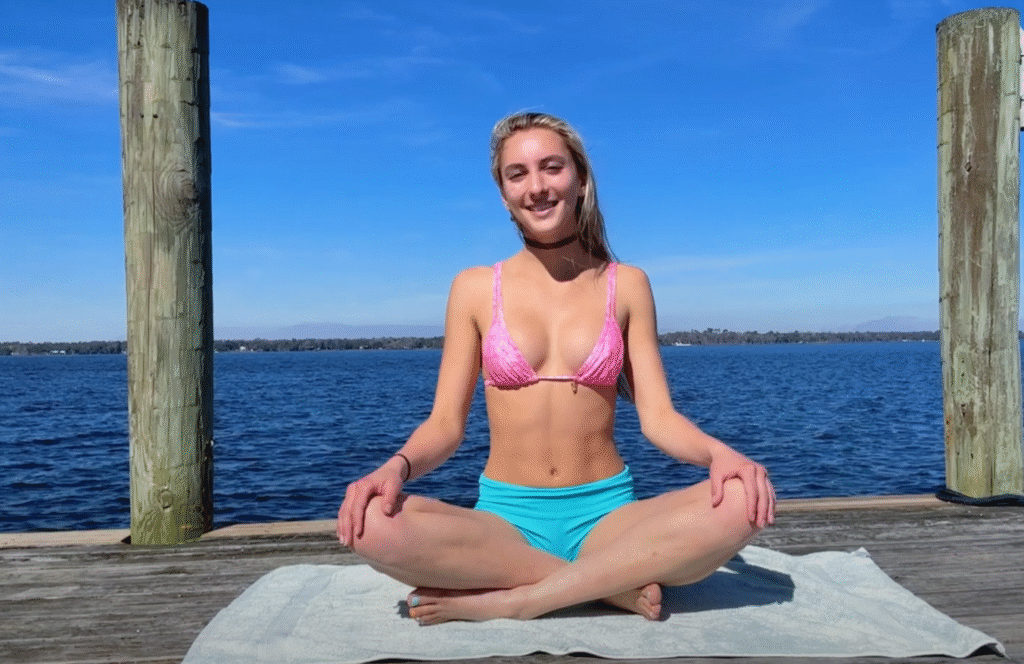

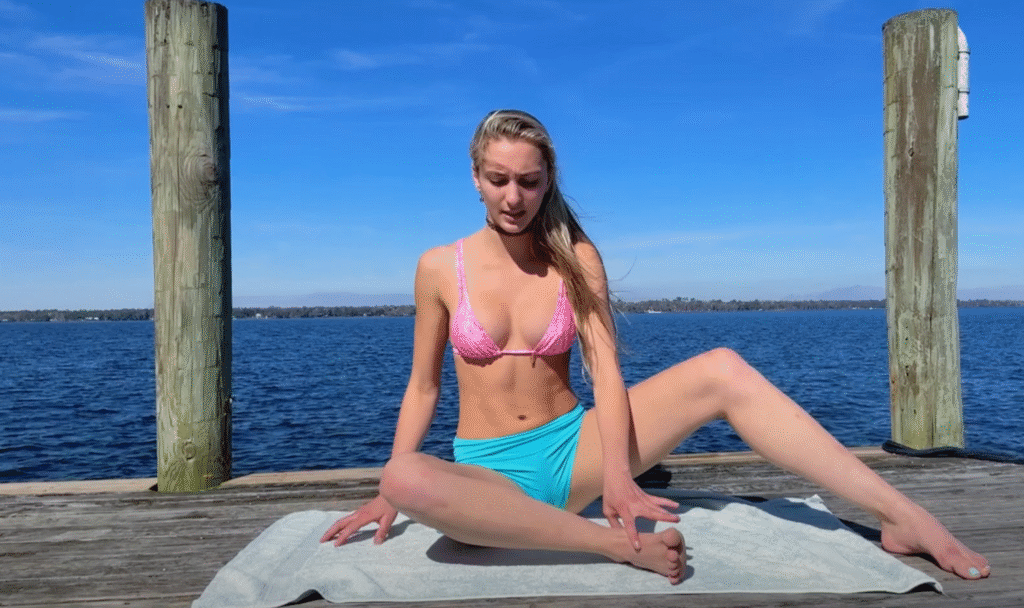
Why Stretch Your Hips?
Before we get into the stretches themselves, let’s take a quick look at why hip mobility matters so much.
Your hips are the bridge between your upper and lower body. The hip joint is a ball-and-socket joint that allows for a wide range of motion. But when muscles around the joint—like the hip flexors, glutes, piriformis, and adductors—become stiff, your movement gets restricted.
Common issues caused by tight hips include:
- Lower back pain
- Sciatica-like symptoms
- Poor posture
- Limited range of motion in squats or lunges
- Discomfort while sitting or standing for long periods
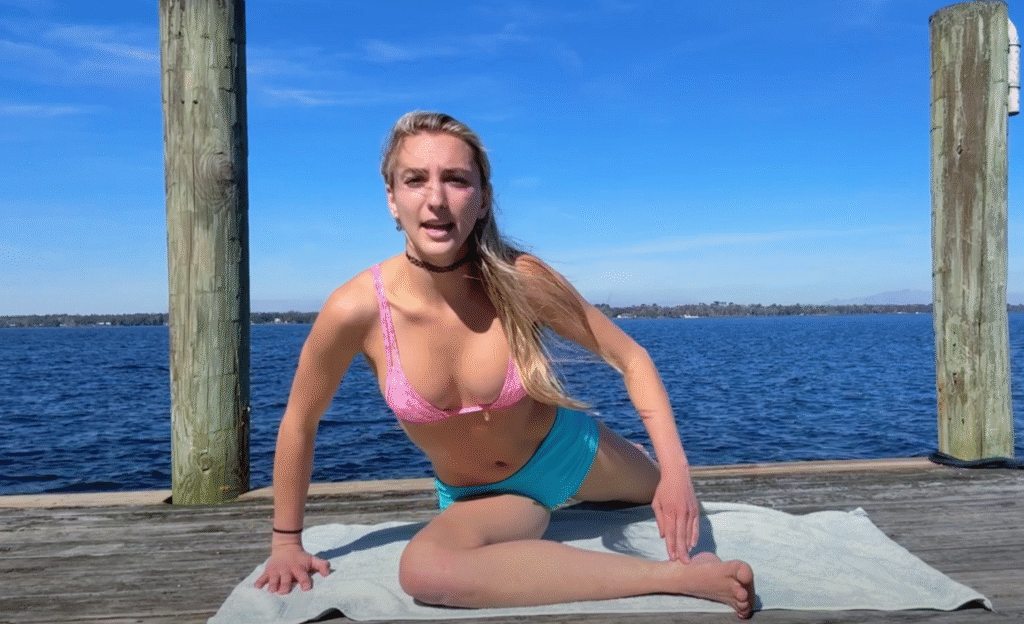
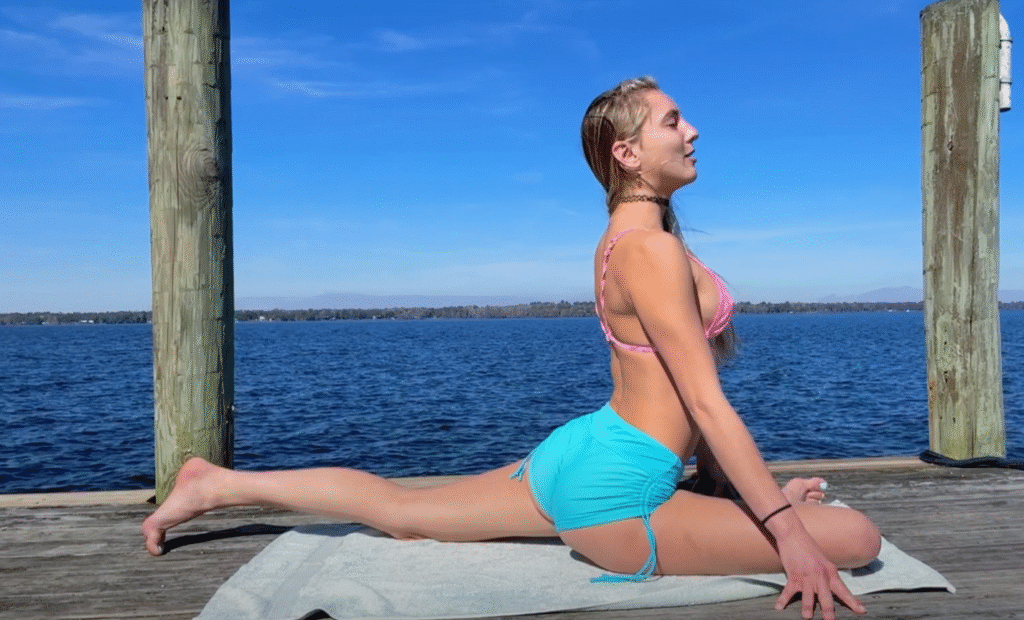

Stretching your hips can improve flexibility, promote better posture, and reduce the risk of injury during exercise or everyday movement. Now, let’s get into the stretches.
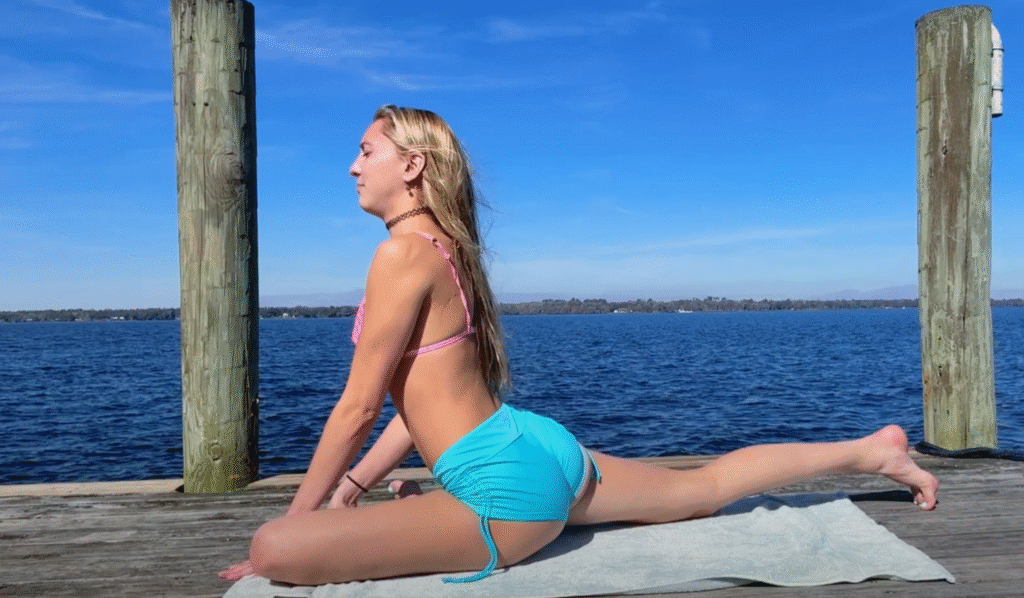
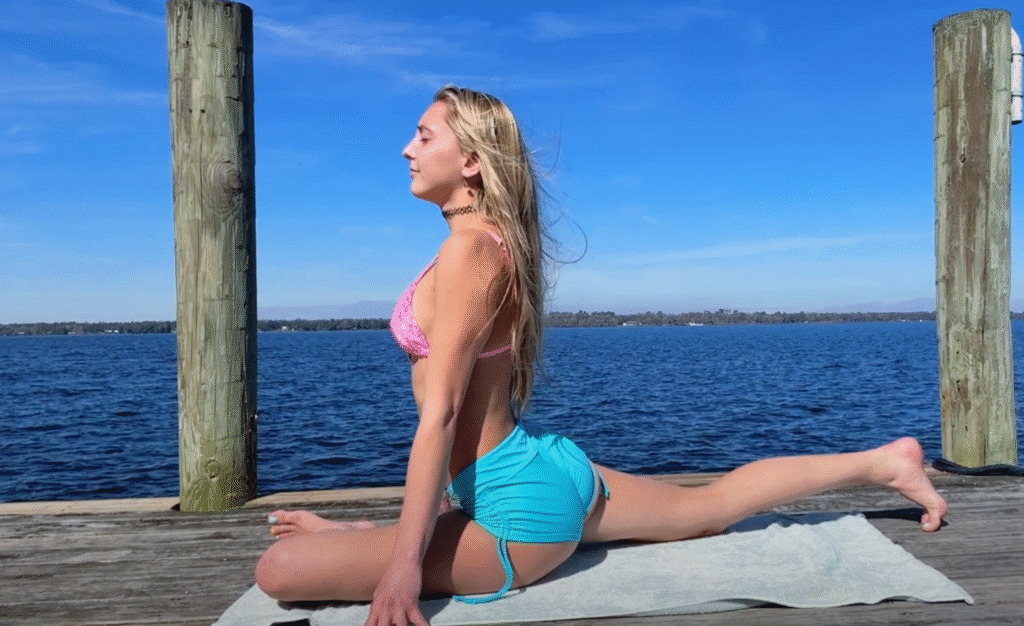
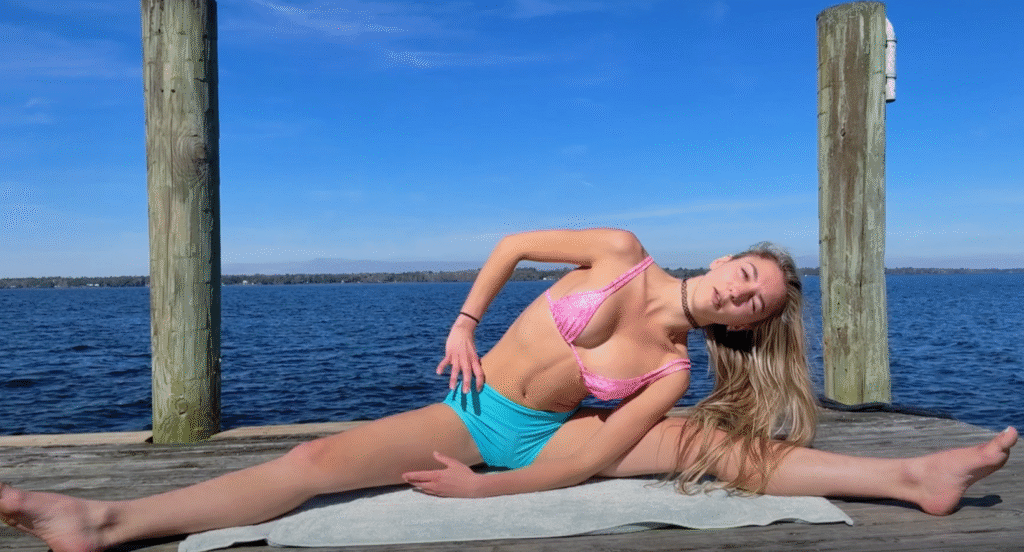
1. Pigeon Pose (Eka Pada Rajakapotasana)
Pigeon Pose is a classic yoga posture that offers a deep stretch for the hip rotators and hip flexors. It’s especially helpful if you spend a lot of time sitting, as it opens up the front and side of the hips.
How to Do It:
- Start in a tabletop position (on hands and knees).
- Bring your right knee forward toward your right wrist.
- Place your right ankle near your left wrist, letting your shin come diagonally under your torso.
- Extend your left leg straight behind you, keeping your hips square to the floor.
- Lower your torso over your front leg and rest on your forearms or fully down onto the mat.
- Breathe deeply and stay for 1-2 minutes, then switch sides.
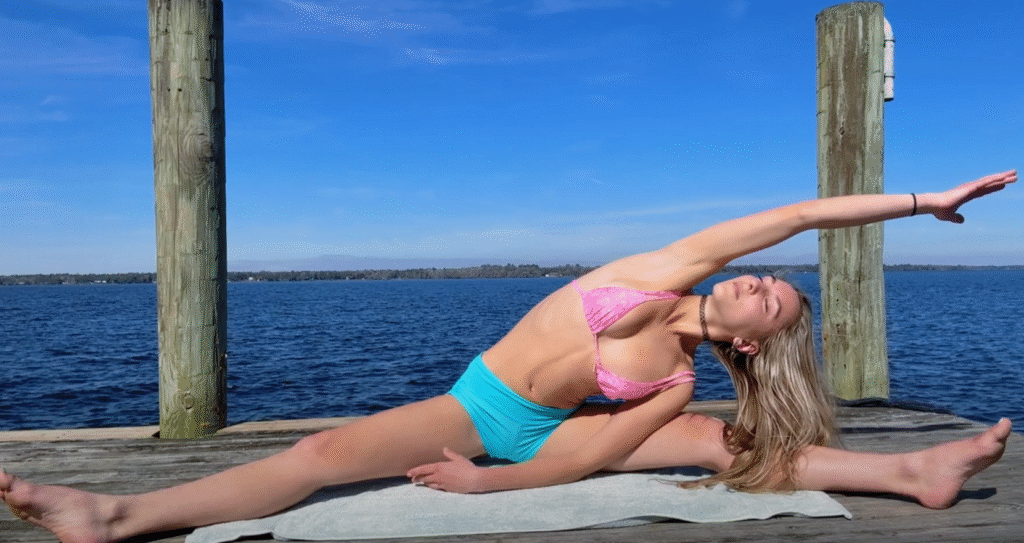
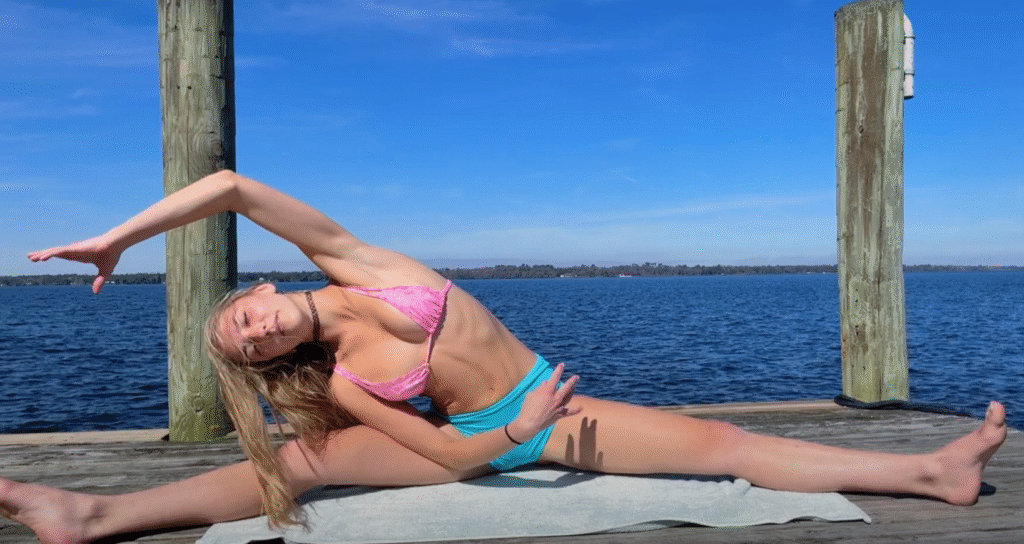

Modifications:
- Place a folded blanket or yoga block under the hip of your bent leg if you feel strain or if your hips are very tight.
- If Pigeon Pose on the mat feels too intense, try Reclined Pigeon (lying on your back and crossing one ankle over the opposite thigh).
Benefits:
- Opens the hip joint deeply
- Stretches the glutes and piriformis
- Relieves lower back tension
- Can help ease sciatic nerve discomfort
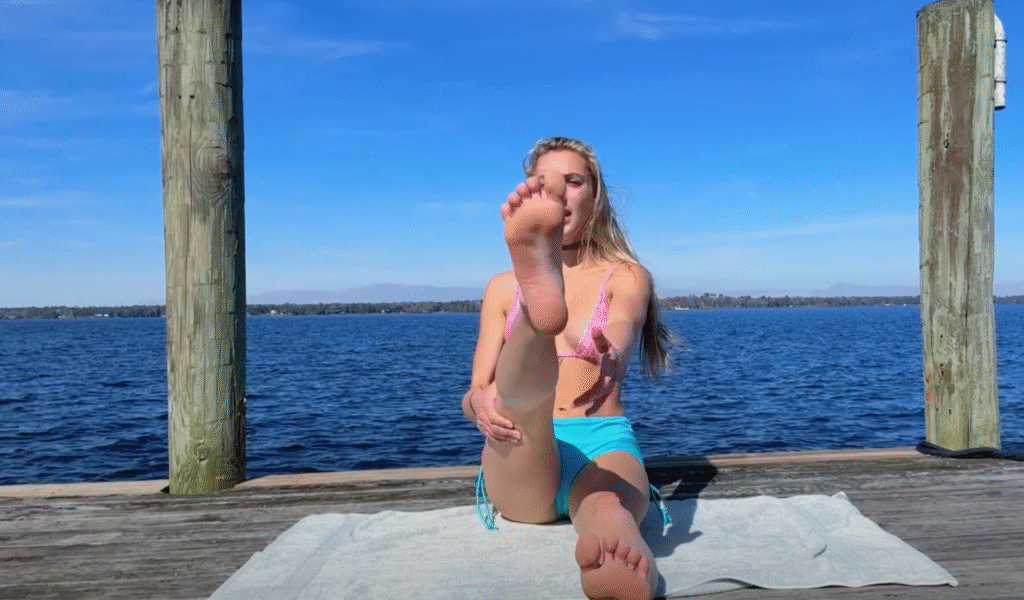
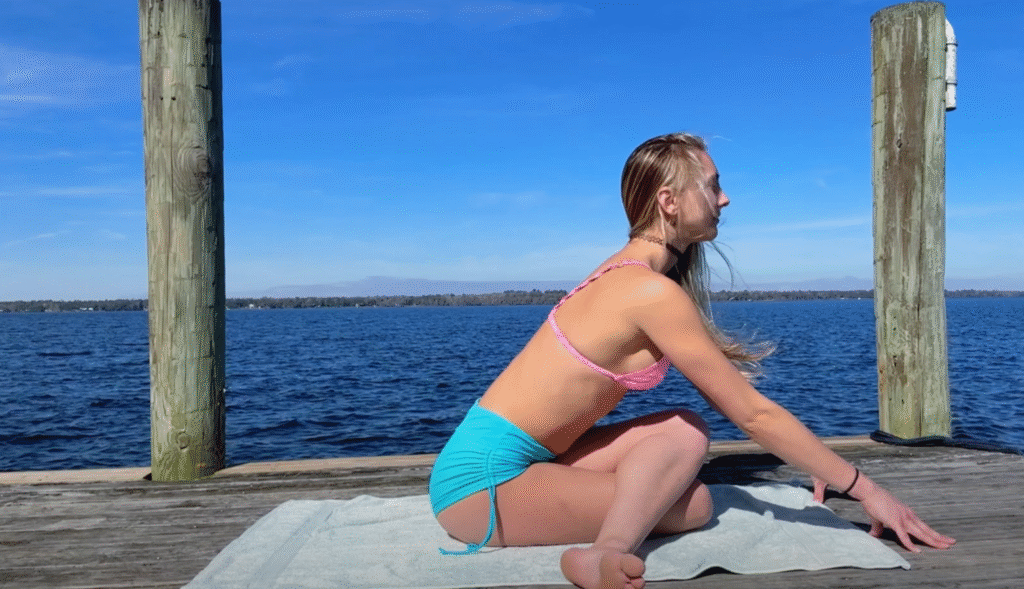
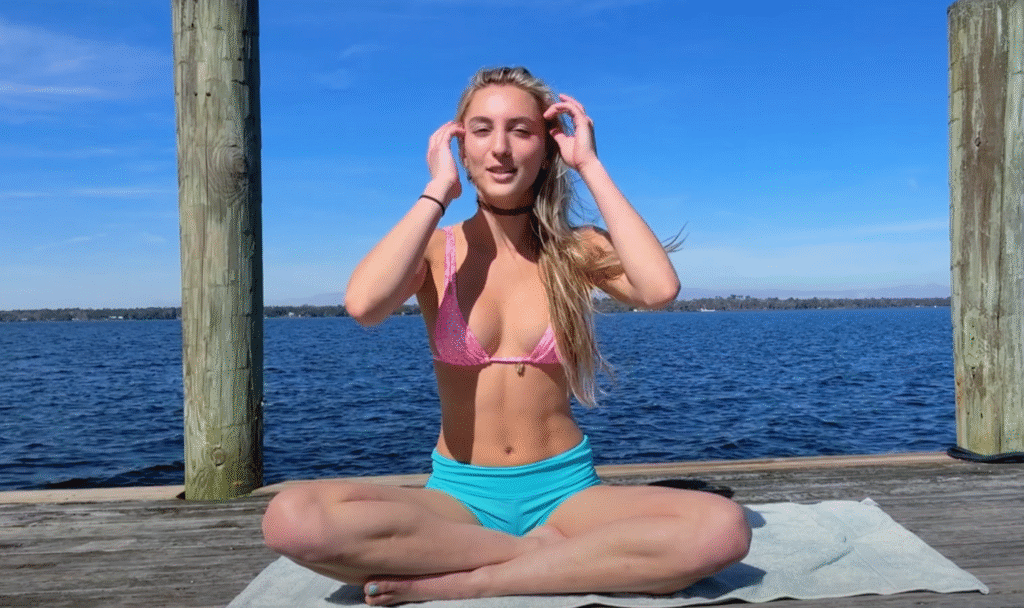
2. Lizard Pose (Utthan Pristhasana)
Lizard Pose is an intense hip opener that targets the hip flexors, hamstrings, and inner thighs. It also challenges your breath and patience, making it as much a mental stretch as a physical one.
How to Do It:
- Begin in a low lunge with your right foot forward and both hands on the inside of your right foot.
- Slide your left leg back to deepen the lunge, keeping your back knee lifted or lowered to the floor depending on your flexibility.
- Lower your elbows to the floor or onto blocks if you can.
- Keep your spine long and chest open, not collapsing.
- Hold the stretch for 1-2 minutes, then repeat on the other side.
Modifications:
- Use blocks under your forearms if you can’t reach the floor.
- Drop your back knee for a gentler version.
- Rock gently forward and back to add movement if static holds are uncomfortable.
Benefits:
- Deeply stretches the hip flexors and inner thighs
- Improves flexibility in the groin and hamstrings
- Enhances hip mobility for athletic movements like squats and lunges
- Can relieve tension built up from prolonged sitting
3. Frog Pose (Bhekasana variation)
Frog Pose is one of the deepest hip openers you can do. It targets the inner thighs and groin area and helps to lengthen the hip muscles that get shortened from too much sitting or high-impact sports.
How to Do It:
- Start on all fours, with knees wide apart and toes turned out to the sides.
- Slowly slide your knees farther apart while keeping your shins in line with your knees (not splaying the feet inward or outward too much).
- Lower your forearms to the mat or a cushion and allow your pelvis to sink toward the floor.
- Breathe deeply and stay in the pose for 1–2 minutes or as long as you can tolerate.
Modifications:
- Place a blanket under your knees for extra cushioning.
- If it’s too intense, try Butterfly Pose instead (seated with the soles of your feet together and knees dropping open).
- Don’t force your knees too wide; ease into the depth gradually.
Benefits:
- Targets inner thighs, groin, and hip joints
- Helps release emotional tension (some believe the hips store stress)
- Improves flexibility for activities like yoga, dance, or martial arts
- Promotes pelvic awareness and relaxation
Tips for Deep Hip Stretching
Stretching deep into the hips can feel intense, especially if you’re new to it. Here are a few tips to get the most out of these poses without injury:
- Warm up first. Gentle movement like walking, light yoga, or dynamic stretching can prepare your body for deeper stretches.
- Use props. Blankets, blocks, and pillows can support your joints and make the poses more accessible.
- Breathe deeply. The breath helps signal your nervous system to relax, allowing the muscles to release tension gradually.
- Don’t push through pain. A good stretch might feel uncomfortable, but it should never feel sharp or painful. Back off if you feel strain.
- Be consistent. Deep hip opening takes time. Practice these stretches regularly, and you’ll begin to feel the difference in your daily life and workouts.
Final Thoughts
Taking time to care for your hips is a gift to your whole body. These three deep hip stretches—Pigeon Pose, Lizard Pose, and Frog Pose—can help release tension, increase mobility, and improve how you feel in your body. Whether you’re an athlete, yogi, office worker, or just someone who wants to move better, hip mobility should be part of your routine.
Add these stretches to your weekly flow, breathe into the tight spots, and give your hips the love they deserve. Over time, you’ll notice improved posture, less discomfort, and a sense of freedom in your movement that just feels right.
